|
|
Post by exoticimports on Sept 14, 2020 4:10:51 GMT -8
Look at the 01 June specimen, UNS HW, the black band- note this butterfly is not symmetric; some bands between veins are dead straight, others drop at the end, being more scalloped. Thus indicating how difficult it is to identify species by visual references.
Question on the UNS FW marginal band: some specimens this black band (where it meets yellow) is dead straight (like the first two specimens) and others very waved and wider, particularly starting around CuA2. I've seen photos of glaucus with this band, again, particularly the trailing part of UNS FW below CuA2, is broad and scalloped. Are the variations in this band of any value to identification?
Genetic studies aside, there has to be 5000 set specimens captured over 100 year period through North American public and private collections. A statistical analysis of a large data set would be interesting. Noting particularly the topic at hand, the "transitional zone" of Upstate NY was a hotbed of Lep collecting and studying from 1930s- 1970s, which should yield hundreds of specimens deposited to Cornell, Buffalo, AMNH, and McGuire. As noted, SUNY Brockport has some NY tigers in the Iveson collection; RIT has a collection of "something" hidden away, Rochester museum has received aged collections which more than likely contain Tigers. Circa 1985 Buffalo Museum of Science focused on insects (an effort now largely dead) so presumably they also have Tiger specimens (though I've not perused the collection in decades and don't remember.)
Chuck
|
|
|
|
|
|
Post by Paul K on Sept 14, 2020 6:15:35 GMT -8
Adam I can not confirm that, official version is: approx.+10 specimens seen on that particular day  |
|
|
|
Post by Paul K on Sept 14, 2020 9:54:08 GMT -8
This is another mystery tiger, what is it?   |
|
|
|
Post by Paul K on Sept 14, 2020 9:58:29 GMT -8
Too large and too late for P.canadensis, too far north for P.glaucus.
|
|
|
|
Post by eurytides on Sept 14, 2020 10:14:12 GMT -8
I think the June 1 specimen is glaucus. A lot of traits are variable and spring generation glaucus can have some traits that are more canadensis-like (eg the black anal band width).
|
|
|
|
Post by eurytides on Sept 14, 2020 10:45:55 GMT -8
Too large and too late for P.canadensis, too far north for P.glaucus. I think MST again, for the reasons you listed. |
|
|
|
|
|
Post by exoticimports on Sept 15, 2020 4:31:54 GMT -8
the microclimate north vs south of the lake can be quite different. This is, as somewhat previously identified, indeed the case that the climatic and geographic conditions on the north- and south side of Lake Ontario are different. This, of course, impacts flora and thus butterfly distribution. As already presented, the most common larval food plant of Papilio troilus, sassafras, is common on the south shore (e.g., Inspiration Point, Irondequoit Bay, Monroe County NY) yet largely absent from Ontario Canada. This demonstrates a few things, beyond topography- first, my error in assumption that such a common plant MUST be common in Ontario, and second that there's always something shocking to learn about something common and apparently simple. Returning to the south vs north of Lake Ontario, note that Canada is a big rock, known as the Canadian Shield. 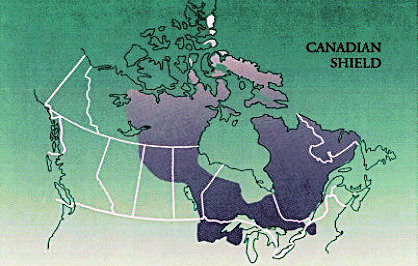 The shield truly is a massive outcropping of stone, extending from the west side of the lake, along most of the Canadian shoreline, to the east. Depending on the source, the Thousand Islands are part of the shield (and certainly look it), inclusive of part of the NY side. Note: to support the above statement with the preceding map, I had to cherry-pick the image, as most Canadian Shield maps show it only north of the eastern end of Lake Ontario/ Thousand Islands...thus demonstrating how data can be selected to support a position. Below is another map of the Canadian Shield coverage:  Niagara Escarpment on west end of Lake Ontario: 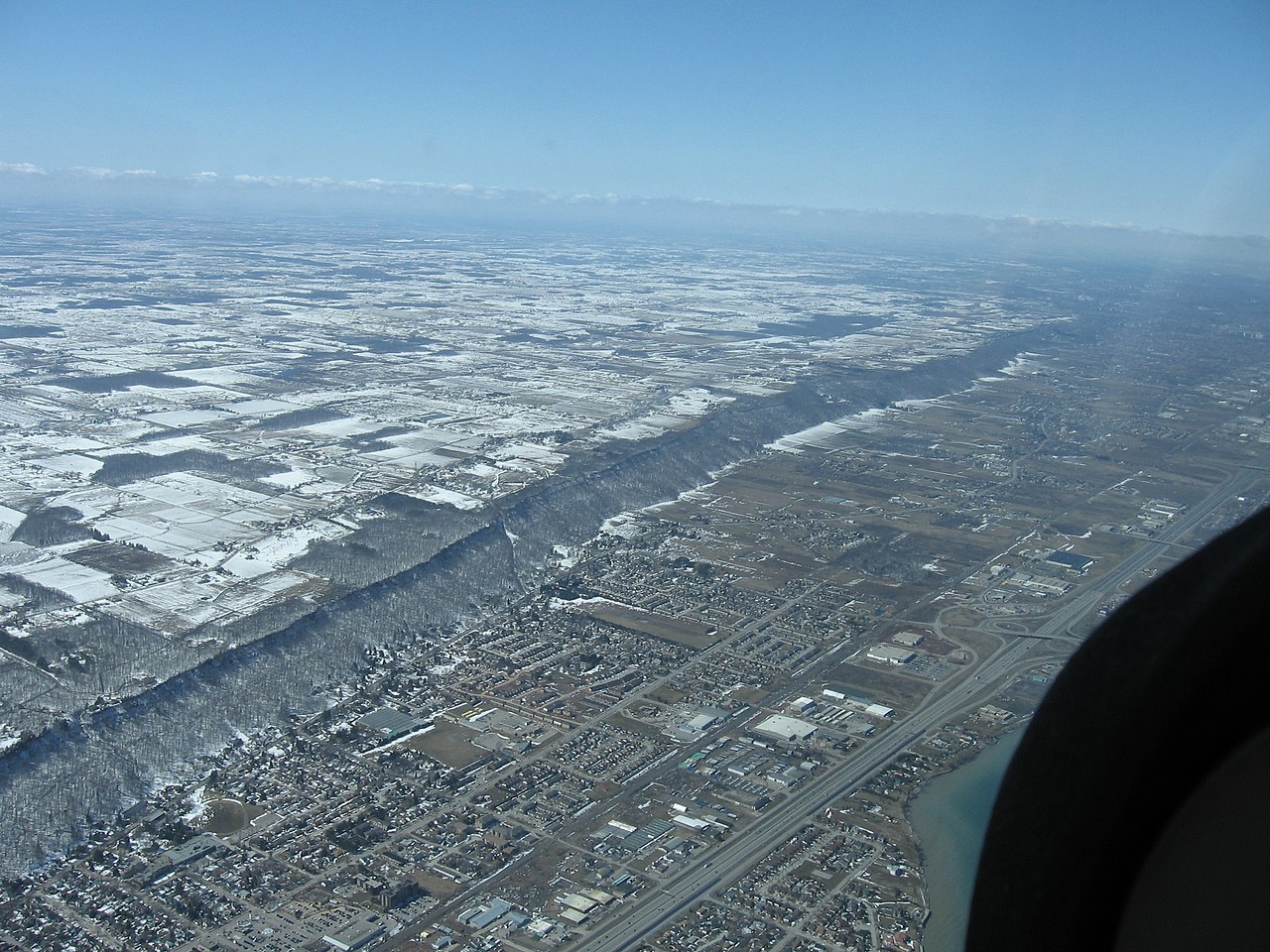 Thousand Islands on east end of Lake Ontario:  As readily researched, the Canadian Shield is a barrier to floral expansion. It's rock, the soils are poor in nutrients, and being rock the temperature swings in winter & summer are extensive. I can say by extensive observation that the trees and plants in the Shield area of Thousand Islands are dry, hardy plants- junipers, shrubbery, etc. Not to say there are not niches of deciduous trees on the Canadian/ north shore, certainly there are, but by and large it's a vastly different environment that most of the south shore. The weather too is vastly different. The prevailing wind is NW, meaning rainfall and snowfall are higher on the south shore. And, the warming effect of the lake keeps temperatures on the south side warmer longer into fall- thus the extensive apple and grape farms on the south shore. That said, most or all of the larval food plants of canadensisare abundant on the south shore. I have a hard time believing canadensisis being pushed north by either competition or food source, as there is plenty. There's no reason canadensis shouldn't be on the south shore, at least historically, even considering a warming that's allowed MST and/or glaucusto move north. All of the above will hopefully be addressed by further research. Chuck |
|
|
|
Post by exoticimports on Sept 15, 2020 5:25:42 GMT -8
To my mind, the first question is: what Tiger was flying in early summer in the Finger Lakes region prior to the late summer MST moving in? Here are some data points from the 1980s; location is eastern Monroe County NY within 5km of the lake shore. Note one record in July. Click on image for larger: Below: ?? June 1984 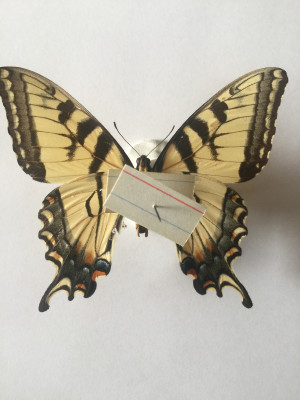 Below: 06 June 1985 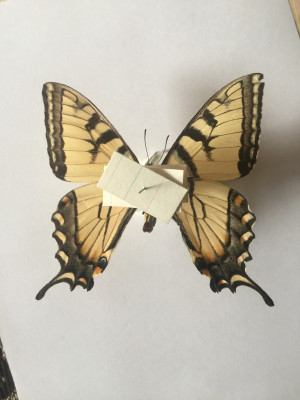 Below: 15 June 1985 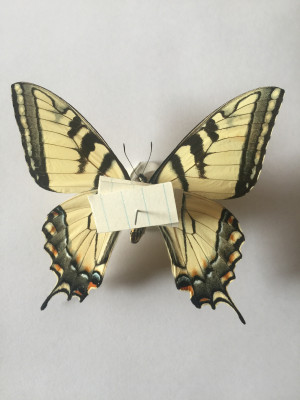 Below: 16 June 1984 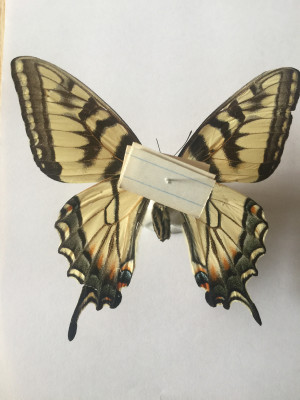 Below: 16 June 1985 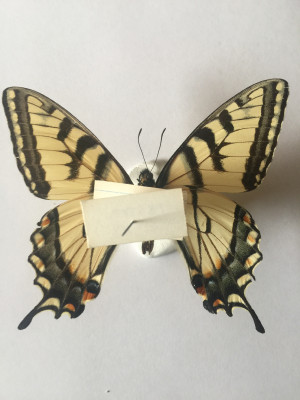 Below: 25 July 1985 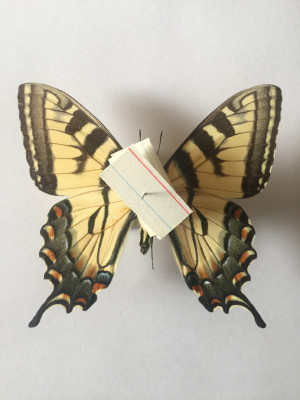 |
|
|
|
Post by Paul K on Sept 15, 2020 7:06:52 GMT -8
I speculate that P.canadensis and glaucus relation might be similar to P.polyxenes and machaon.
These two similar interbreed and one is pushing another more up north. Adam was explaining this to me once, but I forgot how exactly that works.
|
|
|
|
Post by exoticimports on Sept 15, 2020 7:22:07 GMT -8
I guess my question is thus: of all except the last specimen depicted (which I believe to be glaucus), are they canadensis or MST? If they are MST why so early- and why no observations in July/ August in the 1980s? If they are canadensis, OK...but then where was MST in the 1980s? Waiting for comments from eurytides.
In the mean time, I'm coordinating examination & photography of two other sources, which is challenging thanks to COVID.
Chuck
|
|
|
|
Post by eurytides on Sept 15, 2020 15:05:51 GMT -8
All 4 specimens from June look like “spring form” glaucus to me. Mark Scriber describes this in a paper from 1990 (refer to my publication published by the Toronto Ento Assoc in 2017). As for where the MST was in the 80s, I suspect they have been around a while and just got overlooked or presumed to be glaucus. Hagen published on this in 1985 describing a “false second generation” in central NY. In the 2019 TEA publication by Chris Schmidt, he presents some historical data also supporting this view. I emailed Chris about this last night. He plans to do more molecular work this fall/winter depending on when his lab opens up again. The MST may be a very heterogeneous entity as well, because the presumed MST specimens shown by Paul are different and much larger than the MST you see in eastern Ontario.
|
|
|
|
Post by exoticimports on Sept 15, 2020 19:48:14 GMT -8
Ugh. I don't see any difference between Paul's and mine; semi-separated yellow by black on UNS FW, black stripe on UNS HW looks same. Must be my eyes!
If they are spring glaucus, I wonder where summer glaucus were? The one depicted from July is the only record I have from July in the 1980s.
Chuck
|
|
|
|
Post by eurytides on Sept 15, 2020 20:49:53 GMT -8
Ugh. I don't see any difference between Paul's and mine; semi-separated yellow by black on UNS FW, black stripe on UNS HW looks same. Must be my eyes! If they are spring glaucus, I wonder where summer glaucus were? The one depicted from July is the only record I have from July in the 1980s. Chuck It’s not just you Chuck, this really is very difficult and like I told Paul, I’m not 100% sure what his specimens are. But let’s think about this. We agree that your late July specimen is a pretty typical glaucus, right? That has to be 2nd generation given that it’s fresh and caught end of July. So, there must be first generation glaucus. Your early June specimens don’t look like typical canadensis. They look like glaucus with some canadensis-like traits and we know spring form glaucus can look like that, so Occam’s razor... For Paul, his specimens from early to mid July have intermediate traits and don’t look like typical canadensis or glaucus. They are also too late for canadensis or first generation glaucus, which is why I think MST. However, they are a lot larger from the MST from eastern Ontario, so it’s possible they are something else or MST is just very variable. The theory is MST is a “hybrid species,” similar to appalachiensis. I have collected and raised tiger swallowtails from Hamilton which is about an hour west of Paul’s location. I found eggs and early instar glaucus on tuliptree, so it’s legit first generation glaucus. I have also collected and raised second generation glaucus on tuliptree and the adults fly late July and August. I have never seen true canadensis or MST in Hamilton. The best way to tell is probably by rearing them. MST takes about 50% longer to break diapause compared to canadensis. In the wild, this translates to their delayed emergence in July. This is different compared to F1 hybrids of canadensis and glaucus, which is why it can’t be just straight forward hybridization. The first instar larvae are also different from canadensis and glaucus. Plus, in Kingston, we don’t have glaucus (not enough thermal units). It’s only canadensis and MST (or whatever you want to call it) here. So it’s likely some sort of semi-stable “hybrid species.” The molecular data so far is that MST has features of both canadensis and glaucus but it also has some unique molecular features not seen in either parent. We will need more research for sure. I’ve got 9 MST pupae currently. We will see how they look next year. |
|
|
|
Post by exoticimports on Sept 16, 2020 5:51:26 GMT -8
Below specimen from Haliburton Highlands, Ontario CA dated June 1980. Click for larger, then click again for really big. 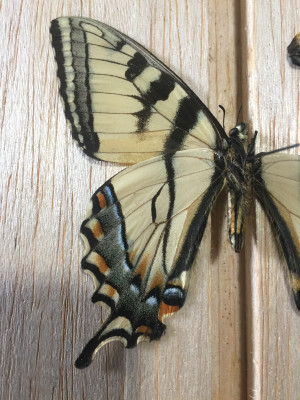 |
|
|
|
Post by eurytides on Sept 16, 2020 6:51:21 GMT -8
That’s legit canadensis. Solid submarginal yellow band ventral FW. Very wide anal margin black band.
|
|